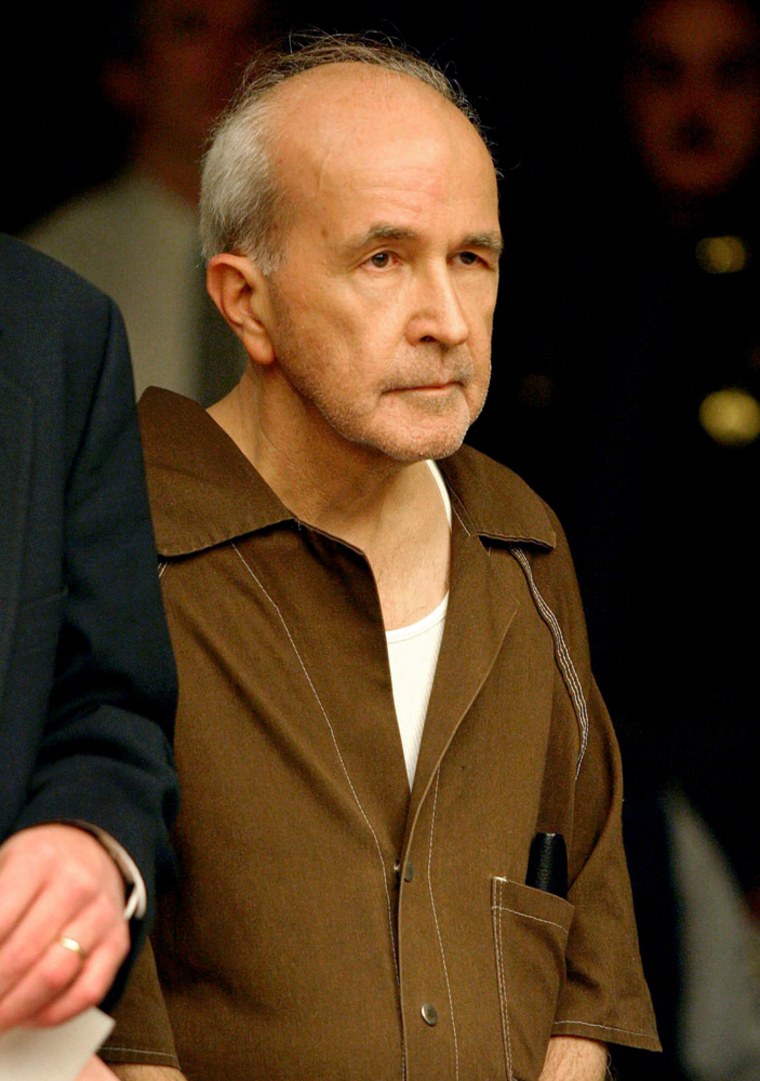A day before Easter in 1980, Sister Margaret Ann Pahl was found strangled and stabbed 30 times in a hospital chapel, the wounds on the nun’s chest and neck forming what investigators say resembled a cross. An altar cloth covered part of her body.
The trail soon went cold and stayed that way for more than 20 years — until investigators circled back to the priest who presided at her funeral Mass.
On Monday, the Rev. Gerald Robinson, 68, goes on trial on murder charges in a case swirling with allegations of an official cover-up, rumors of sexual abuse rites among priests, and suspicions that the killing was some kind of ritual slaying. Robinson could get life in prison if convicted.
Investigators have not disclosed a motive for the slaying, but have said the nun was not sexually assaulted.
Robinson was the Roman Catholic chaplain at Mercy Hospital and a popular priest in this blue-collar city of about 300,000, where a quarter of the residents are Catholic. He was especially well-liked in Polish neighborhoods because he delivered some sermons and heard confessions in Polish.
Immediately considered a suspect
Robinson was a suspect immediately after the slaying of Sister Margaret Ann, 71, the caretaker of the hospital chapel, because he was nearby at the time of the killing. Police questioned him for hours and found a sword-shaped letter opener in his room that prosecutors now believe was the murder weapon. But Robinson was not arrested until two years ago.
Since then, some community members have accused the Toledo police and the Toledo Catholic Diocese of not aggressively investigating the slaying and crimes involving priests accused of molesting children.
“We know this is a trial about murder, but the cover-up can’t be ignored,” said Claudia Vercelloti, director of the Toledo office of Survivors Network of those Abused by Priests.
Current and former police officers deny there was a cover-up, saying Robinson was not charged earlier because there was not enough evidence. There were no fingerprints, no footprints, no witnesses. DNA technology was not available.
Investigators who reopened the murder case say they found bloodstains on the altar cloth that matched those from the letter opener. They said the stains were created when the letter opener was laid down.
Claim of confession abandoned
Prosecutors also plan to use Robinson’s statements made to police, including a claim that someone else had confessed to killing the woman. He later admitted making that up.
Investigators reopened the murder case in December 2003 after prosecutors office received a letter about a woman’s claims that she was molested by priests for years as a child. Among the names she mentioned was Robinson. Police were unable to substantiate her allegations of sexual abuse.
There also have been whispers that a few priests, including Robinson, took part in ritual abuse ceremonies. A woman who filed a lawsuit against Robinson and other clergy members said they tortured and raped her in rituals performed in a church basement nearly 40 years ago.
Robinson’s attorney, Alan Konop, has said the allegations did not “deserve the dignity of a reply.” No charges have resulted from those claims, and police could not link any ritual abuse to Robinson, The Blade reported a year ago.
Appearance of ritual slaying
However, police have said the nun’s killing appeared to be some type of ritual slaying. They have refused to elaborate, other than to say that the body was posed to look as though she had been sexually assaulted, with the nun’s underwear pulled down.
Dave Davison, the first police officer to arrive in the chapel, said he saw no evidence of a ritual and called those claims a “smokescreen” set by the killer to throw off investigators.
It is not known whether there will be any mention of ritual abuse at Robinson’s trial.
Dawn Perlmutter, an expert on religious violence and ritualistic crimes, has been assisting prosecutors, and said that in previous cases she has advised prosecutors not to mention claims of ritualistic acts.
“It just muddies the water,” she said. “People do not want to believe these things go on. It can really affect the outcome.”
Suspect on leave
Robinson was transferred from the hospital a year after the slaying and became pastor at three parishes in Toledo. At the time of his arrest he ministered to the sick and dying in nursing homes. He is on leave but is allowed to wear his priest’s collar.
Prosecutors and defense attorneys are not commenting, saying the judge has ordered them not to talk about the case. Robinson is free on bail. He cannot get the death penalty because it was not in effect at the time of the slaying.
Jack Sparagowski, a parishioner at an inner-city church where Robinson used to celebrate Mass on Easter weekend, set up a legal defense fund that raised $12,000. Some family members and supporters put their houses up to post a $400,000 bond.
“For someone to commit murder, you have to have a violent streak,” Sparagowski said. “I’ve never heard father raise his voice or show any expression of anger. The whole thing seems so bizarre.”
